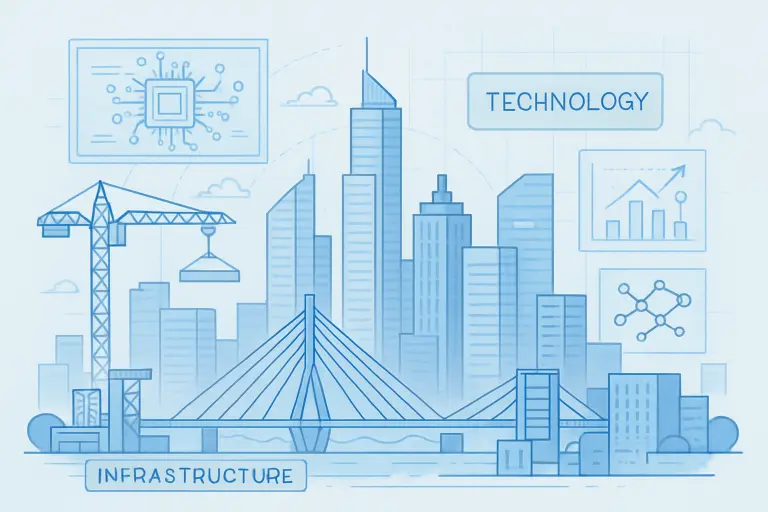Modern Solutions for Civil Engineering Projects
Key Takeaways
- Integration of advanced technologies is revolutionizing civil engineering practices.
- Emphasis on sustainability is leading to the adoption of eco-friendly materials and methods.
- Digital tools are enhancing collaboration and precision in project execution.
Civil engineering is rapidly evolving as engineers and construction professionals adopt new technologies, materials, and methods to meet the growing demands of modern infrastructure. Staying competitive requires a deep understanding of the transformative tools and sustainable strategies shaping today’s construction landscape. Whether you’re responsible for design, planning, or project execution, embracing these advancements delivers significant efficiency, safety, and environmental benefits. If you’re looking for expert guidance or need to develop a comprehensive civil engineering site plan, having these modern solutions in mind is essential for success.
As construction projects increase in size and complexity, leveraging advanced technology is becoming the norm rather than the exception. The push toward sustainability also means engineers seek green materials and energy-efficient techniques. In this dynamic environment, civil engineering is not just about building for today—it’s about creating resilient, future-ready infrastructure that benefits communities and the environment alike
Building Information Modeling (BIM)
One of the most significant advancements in civil engineering is Building Information Modeling (BIM). This approach centers on creating highly detailed 3D models that capture the geometry and relevant data of all aspects of a structure. BIM isn’t just a digital drawing—it provides an interactive, data-rich platform for design, documentation, scheduling, and cost estimation. Utilizing BIM allows for better collaboration among architects, engineers, and contractors, significantly reducing the risk of costly change orders during construction. Studies from Autodesk indicate that BIM adoption can reduce errors and omissions by up to 61%, ensuring projects stay on time and within budget.
Artificial Intelligence and Machine Learning
Harnessing the power of artificial intelligence (AI) and machine learning (ML) is quickly becoming standard in civil engineering. These technologies excel at analyzing complex datasets from past and present projects—predicting everything from optimal scheduling sequences to hidden structural risks. AI-driven tools support risk assessment and resource optimization, enabling proactive solutions before issues escalate. This leads to more efficient workflows and higher project success rates for project managers. AI integration in civil engineering boosts productivity, improves outcomes, and creates safer work environments.
Advanced Materials
The advent of new materials is extending the lifespan and performance of civil engineering structures. Innovations like self-healing concrete—containing smart microcapsules that repair cracks automatically—are redefining maintenance expectations for bridges, roadways, and buildings. High-performance composites, such as fiber-reinforced polymers, offer superior strength-to-weight ratios while resisting corrosion and reducing maintenance requirements. These material breakthroughs contribute to green building initiatives by reducing energy consumption and environmental impact over the structure’s life cycle.
3D Printing
3D printing is reshaping the way civil engineering projects are designed and built. Also known as additive manufacturing, this process allows for the rapid prototyping of complex structural elements and even the direct construction of buildings and infrastructure components. The precision of 3D printing means less wasted material and the ability to create unique architectural forms with minimal additional cost. Major projects utilizing this technology have demonstrated significant savings in labor and raw materials, pointing to a more sustainable future in construction. For instance, the 3D Print Canal House in Amsterdam showcases the potential of 3D printing in creating complex structures efficiently.
Drones and Robotics
Drones and robotics are transforming construction sites by ensuring accuracy, safety, and efficiency. Drones equipped with high-resolution cameras and LIDAR sensors can quickly survey large areas, monitor progress, and detect issues that would go unnoticed until much later. Meanwhile, robots are being used to carry out dangerous or repetitive tasks, such as bricklaying or demolition, thereby reducing human risk and increasing precision. This automation is instrumental in maintaining project timelines and budgets while addressing labor shortages in the industry.
Digital Twins
Digital twin technology involves creating real-time virtual replicas of physical structures, assets, or systems. These digital models are updated throughout the project’s lifecycle, allowing for advanced monitoring, operational insights, and predictive maintenance. With digital twins, facility managers can simulate scenarios, anticipate failures, and optimize the performance of bridges, buildings, and utility networks. Integrating sensors within the built environment feeds continuous data into the digital twin, enabling data-driven infrastructure management long after initial construction.
Sustainable Construction Practices
As traditional construction’s environmental impact becomes increasingly unsustainable, civil engineers are adopting new green practices. These include specifying recycled and locally sourced materials, prioritizing energy-efficient building envelopes, and implementing water-saving technologies. Projects are often measured against certification standards such as LEED or BREEAM, which promote eco-conscious design and construction. Adopting such standards is not only good for the planet, but it can also reduce operating costs and boost property value.
Conclusion
The civil engineering industry is at the threshold of a new era, defined by intelligent design, green construction, and data-driven management. By championing the adoption of advanced digital tools, sustainable materials, and innovative construction practices, professionals can deliver safer, more resilient, and environmentally responsible infrastructure. Keeping up with these modern solutions ensures projects meet today’s demands and provide long-term value to society.
Also Read-Smart Design at Sea: How Integrated Tech is Optimizing Space and Experience Onboard

